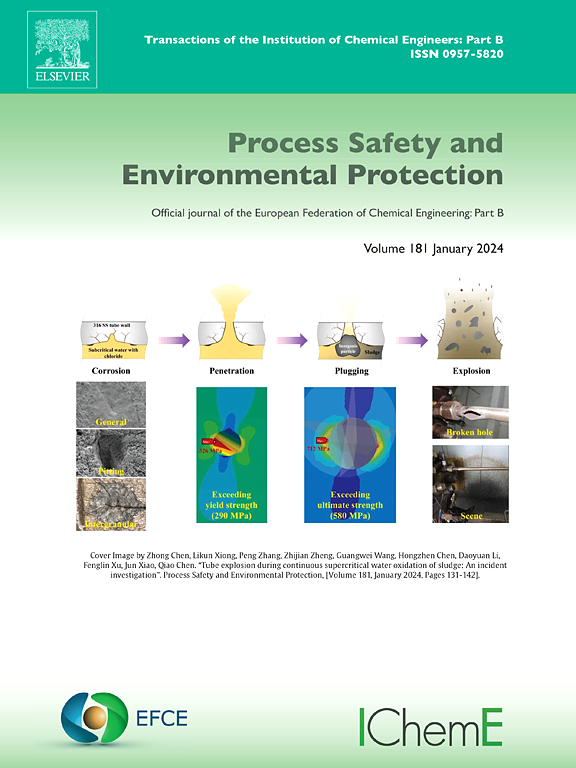Influence of arbuscular mycorrhizal fungi symbiosis on S-metolachlor and its metabolites dynamics in constructed wetlands
IF 6.9
2区 环境科学与生态学
Q1 ENGINEERING, CHEMICAL
引用次数: 0
Abstract
Arbuscular mycorrhizal fungi (AMF) symbiosis has shown promise in enhancing constructed wetlands (CWs) treatment capabilities, though its influence on pesticide behavior and microbial interactions needs further examination. This study explores AMF's impact on S-metolachlor behavior within CWs, focusing on how AMF colonization affects organic carbon content, metabolite transformation, and microbial community composition. AMF presence yielded higher mean total organic carbon after 32 days in outflows (13.2–13.7 mg/L) compared to AMF absence (10.5–10.6 mg/L), with significant differences in both treated (p = 0.008) and untreated (p = 0.004) systems. Although S-metolachlor removal rates were comparable (90.2 % vs. 92.7 %), pesticide retention was mainly in substrates (54.2–64.0 %, 1.8–2.0 μg/kg), followed by liquid phase (34.7–43.8 %, 15.4–20.7 μg/L), roots, and leaves. The liquid phase exhibited the highest metabolite diversity (17 types), and AMF presence lowered concentrations of 15 metabolites. Metagenomic analysis indicated that AMF enriched bacterial communities associated with organic breakdown and nitrogen cycling, such as Acidobacteria and Catenulispora. The change of metabolic pathways revealed that AMF presence shifted bacterial pathways away toward enhanced biosynthesis and metabolic capabilities, including the production of steroids, siderophores and ansamycin. Besides, AMF boosted functional genes linked to biosynthesis, notably CcmB, nrdA, and glpX. The findings highlight AMF's potential in supporting S-metolachlor bioremediation within CWs by enhancing pollutant resilience mechanisms and microbial diversity.
求助全文
约1分钟内获得全文
求助全文
来源期刊

Process Safety and Environmental Protection
环境科学-工程:化工
CiteScore
11.40
自引率
15.40%
发文量
929
审稿时长
8.0 months
期刊介绍:
The Process Safety and Environmental Protection (PSEP) journal is a leading international publication that focuses on the publication of high-quality, original research papers in the field of engineering, specifically those related to the safety of industrial processes and environmental protection. The journal encourages submissions that present new developments in safety and environmental aspects, particularly those that show how research findings can be applied in process engineering design and practice.
PSEP is particularly interested in research that brings fresh perspectives to established engineering principles, identifies unsolved problems, or suggests directions for future research. The journal also values contributions that push the boundaries of traditional engineering and welcomes multidisciplinary papers.
PSEP's articles are abstracted and indexed by a range of databases and services, which helps to ensure that the journal's research is accessible and recognized in the academic and professional communities. These databases include ANTE, Chemical Abstracts, Chemical Hazards in Industry, Current Contents, Elsevier Engineering Information database, Pascal Francis, Web of Science, Scopus, Engineering Information Database EnCompass LIT (Elsevier), and INSPEC. This wide coverage facilitates the dissemination of the journal's content to a global audience interested in process safety and environmental engineering.
 求助内容:
求助内容: 应助结果提醒方式:
应助结果提醒方式:


